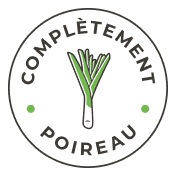Probably one of the most controversial foods that shed blood over food news and blogs, soya tae more and more place in North America. For exemple, a quebecker tofu productor has seen his sales rise of 20 % each years since 5 years.
Fear by some and praised by others. What's really true? Let's bust 4 popular myths with soya.
Myth 1 : soya increase breast cancer
FALSE. Soya contains the greatest sources of food isoflavones (phytoestrogens), a compounds which as a structure like ones of human estrogen. However, studies about risk related to intakes of soya were mostly done with rodents. With most recent studies, it's shown that rodents doesn't metabolize soya like we, humans, do, furthermore, phytoestrogens doesn't bind to same receptors as estrogen. In fact, actual scientifical literature shows that women which have regular intakes of soya present a lower risk of breast cancer with also a lower risk of recidivism and mortality over survivers.
Myth 2 : men shouldn't be eating soya
FALSE. Scientifical literature doesn't prove any effects of feminization with isoflavones from soya with men. It's established that the amount of testosterone and spermatozoid aren't affected by the intakes of isoflavones in soya.
Myth 3 : soya is modified genetically (OGM)
TRUE and FALSE. The " yellow " canadian soya, which is used to producefresh foods such as tofu, tempeh and soya drinks isn't genetically modified. To be honest, OGM canadian soya is a type of soya " of black seeds" and used to feed breeding animals. Based on the organism Vigilance OGM which detects the presence of OGM from the field to your plates, thus we're not harvesting genetically modified yelow soya in this country.
Myth 4 : soya is bad for the thyroid gland
TRUE and FLASE. In the absence of a thyroid disease (hyper or hypothyroid), risk for soya to alter functions of the thyroid are very low, even more when the intakes of iodine is enough. In the case of an hypothyroid, we suggest to delay its medication (most of the time Synthroid) of two hours before eating anything containing soya, since it could lessen the efficacity of the medication. Great sources of iodine includes table salt, fish, seafoods, seaweeds, dairy products, legumes and eggs.
3 reasons to love soya
A soldier to prevent cancer
It's been clearly shown that intakes of soya lessen risk for few cancers, preserves the bone mass (particularly with menopausal women) and seem to have a protective effect against cardiovascular diseases.
A friend for a durable alimentation
Also, the environmental impact of soya harvesting is very low when compared to ones of meat. For exemple, we emit 13 times less greenhouse gaz to produce a kilometer of tofu compared to a kilometer of beef.
A creative chameleon in the kitchen
Being part of the legumes family, soya is polyvalent, rich in protein and can be cooked in many different ways : drinks replacing cow's milk, frozen edamames, tofu, tempeh, miso, roasted beans for snacks... Less known than tofu, but use the same way, tempeh is excellent for the intestinal flora, also adding 9 g of fibers per portion. Shelled edamames beans that we can find frozen makes original appetizers and nutritious, Japanese eat it this way for a milenary now!




